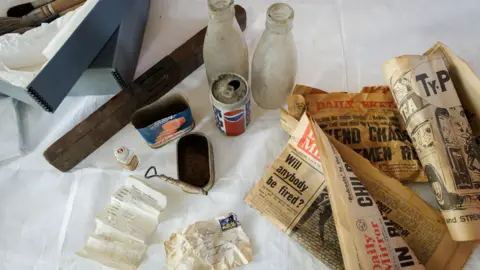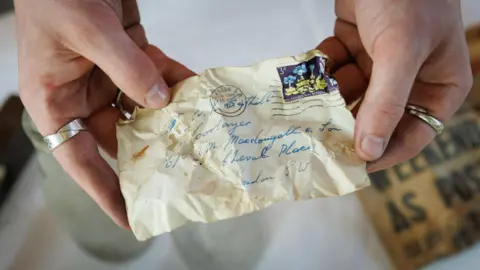Beneath the floorboards at Banqueting House
 Historic Royal Palaces
Historic Royal Palaces Historic Royal Palaces
Historic Royal PalacesThe Banqueting House is the last surviving building of Whitehall Palace, the main residence of English monarchs from 1530 until 1698 which occupied most of where Whitehall is today.
It is best known as the site of the execution of the Stuart monarch Charles I, who was beheaded there on 30 January 1649.
The building is managed by independent charity Historic Royal Palaces and is undergoing a year-long construction project to transform the interior.
Some of the works include adding new flooring to the Main Hall to replace the 1960s floor with an English oak one, to be more in harmony with the 17th Century building.
The opportunity to look beneath the floorboards has led to the discovery of various items left behind by floor layers.
Among the finds were old shoes, newspapers, stamps and sardine tins.
The Banqueting House is currently closed while the work is carried out but is expected to reopen in the summer.
Listen to the best of BBC Radio London on Sounds and follow BBC London on Facebook, X and Instagram. Send your story ideas to [email protected]
